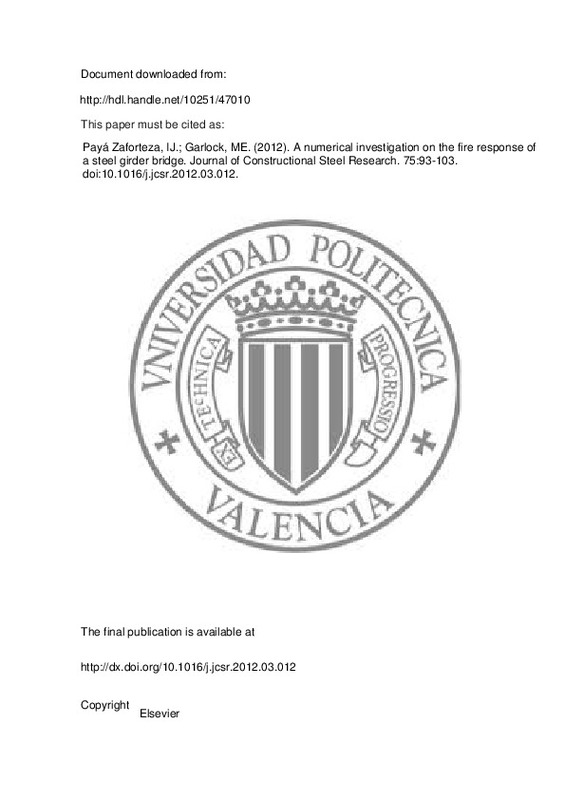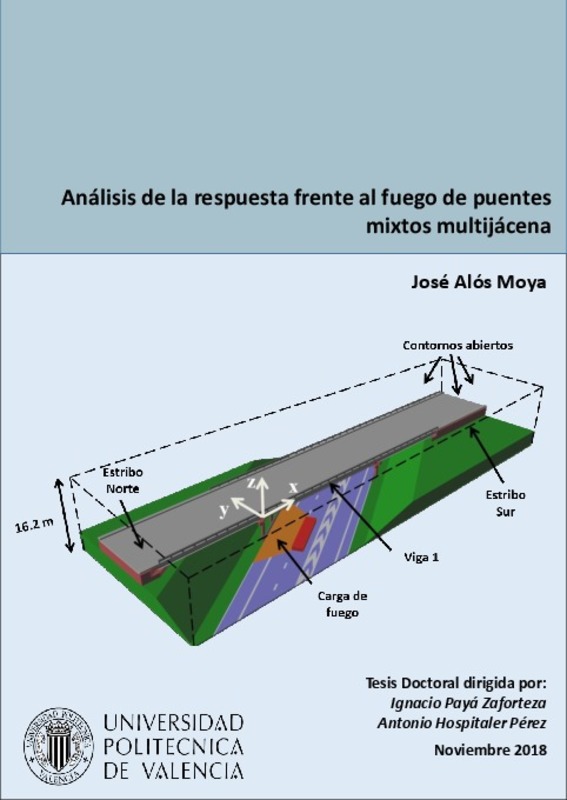Lozano-Galant, JA.; Paya-Zaforteza, I.; Xu, D.; Turmo Coderque, J. (2012). Analysis of the construction process of cable-stayed bridges built on temporary supports. Engineering Structures. 40:95-106. doi:10.1016/j.engstruct.2012.02.005
Por favor, use este identificador para citar o enlazar este ítem: http://hdl.handle.net/10251/46670
|
Título:
|
Analysis of the construction process of cable-stayed bridges built on temporary supports
|
|
Autor:
|
Lozano-Galant, Jose A.
Paya-Zaforteza, I.
Xu, Dong
Turmo Coderque, José
|
|
Entidad UPV:
|
Universitat Politècnica de València. Departamento de Ingeniería de la Construcción y de Proyectos de Ingeniería Civil - Departament d'Enginyeria de la Construcció i de Projectes d'Enginyeria Civil
Universitat Politècnica de València. Instituto de Ciencia y Tecnología del Hormigón - Institut de Ciència i Tecnologia del Formigó
|
|
Fecha difusión:
|
|
|
Resumen:
|
The temporary supports erection method is a fast and economical way of building cable-stayed bridges. In this method the bridge deck is first erected on a set of temporary and permanent supports and then, the stays are ...[+]
The temporary supports erection method is a fast and economical way of building cable-stayed bridges. In this method the bridge deck is first erected on a set of temporary and permanent supports and then, the stays are successively placed and tensioned according to a predefined tensioning sequence. A proper definition and analysis of this sequence is very complex as the structure is highly statically indeterminate, exhibits a non linear behavior and has a changing static scheme.Despite its importance, no specific research referring to the modeling of the temporary support erection method has been found as most of the modeling procedures are proposed for the alternative erection technique, the cantilever erection method. The modeling carried out by most of these methods is based on the opposite construction sequence followed on site, this is to say, the structure is disassembled from the desired final stage (. Objective Completion Stage, . OCS).A procedure, the Backward Algorithm (. BA), is formally presented in this paper for calculation of the erection of cable-stayed bridges built on temporary supports. Because of its simplicity the . BA can be reproduced by any structural code that enables the modeling of the prestresses of the stays by means of imposed strains or imposed temperature increments. Another advantage is that no separate models are needed to calculate the evolution of stresses in the strands when the strand by strand tensioning technique is used. Furthermore, the stay elongations when prestressed can be easily obtained when the stays are prestressed in a single operation or strand by strand. This information is important to control the correct and safe prestressing of the stay on site. In addition, it also help the designer to control if the anchor wedge bites the strand in the same position several times during the prestressing process. © 2012 Elsevier Ltd.
[-]
|
|
Palabras clave:
|
Backward modeling
,
Cable-stayed bridges
,
Construction process
,
Temporary supports erection method
,
Construction sequence
,
Erection techniques
,
Imposed strains
,
Modeling procedure
,
Nonlinear behavior
,
Pre-stressed
,
Prestresses
,
Structural codes
,
Temperature increment
,
Temporary support
,
Algorithms
,
Box girder bridges
,
Cables
,
Prestressing
,
Cable stayed bridges
,
Algorithm
,
Bridge construction
,
Cable laying
,
Numerical model
,
Stress analysis
,
Structural analysis
,
Support structure
|
|
Derechos de uso:
|
Cerrado |
|
Fuente:
|
Engineering Structures. (issn:
0141-0296
)
|
|
DOI:
|
10.1016/j.engstruct.2012.02.005
|
|
Editorial:
|
Elsevier
|
|
Versión del editor:
|
http://dx.doi.org/10.1016/j.engstruct.2012.02.005
|
|
Código del Proyecto:
|
info:eu-repo/grantAgreement/MICINN//BIA2009-13056/ES/Estudio Experimental Del Coeficiente De Rozamiento Entre Dovelas Prefabricadas De Hormigon Para Puentes Con Junta Seca Conjugada/
info:eu-repo/grantAgreement/Junta de Comunidades de Castilla-La Mancha//PII2I09-0129-4085/ES/Optimización Del Proceso De Tesado De Puentes Atirantados Construidos Con Tableros Apeados/
|
|
Agradecimientos:
|
Part of this work was done through a collaborative agreement between University of Castilla-La Mancha (Spain) and Tongji University (China). This included an exchange of faculty and scholars. The financial support from ...[+]
Part of this work was done through a collaborative agreement between University of Castilla-La Mancha (Spain) and Tongji University (China). This included an exchange of faculty and scholars. The financial support from Kwang-Hua Foundation from College of Civil Engineering of Tongji University and from the International Relation Office of University of Castilla-La Mancha is greatly appreciated.
[-]
|
|
Tipo:
|
Artículo
|






![[Cerrado]](/themes/UPV/images/candado.png)



